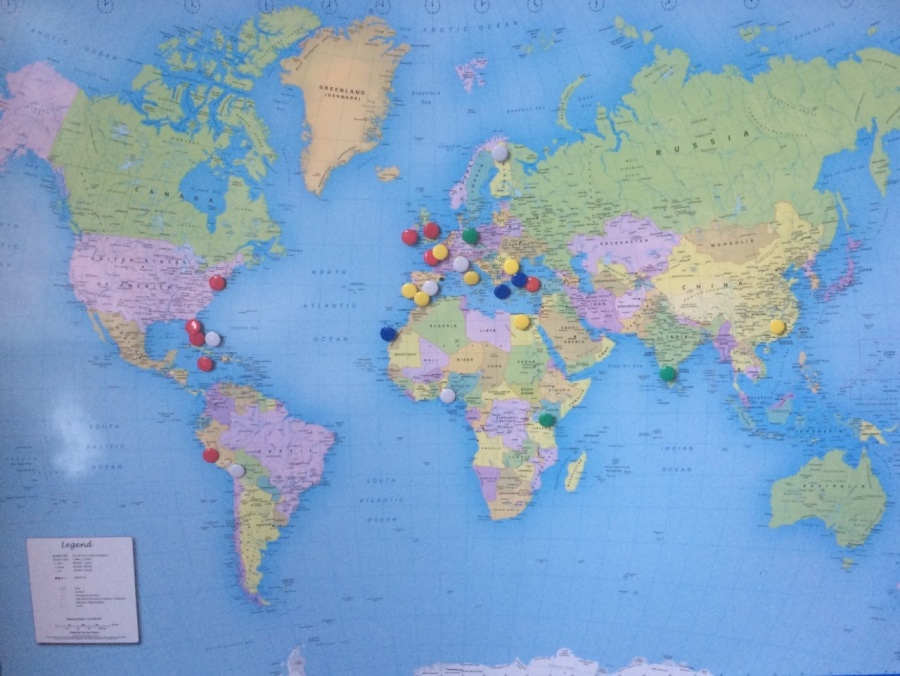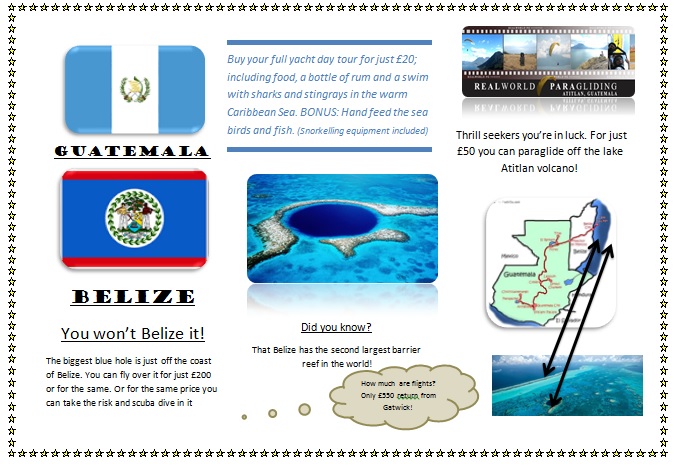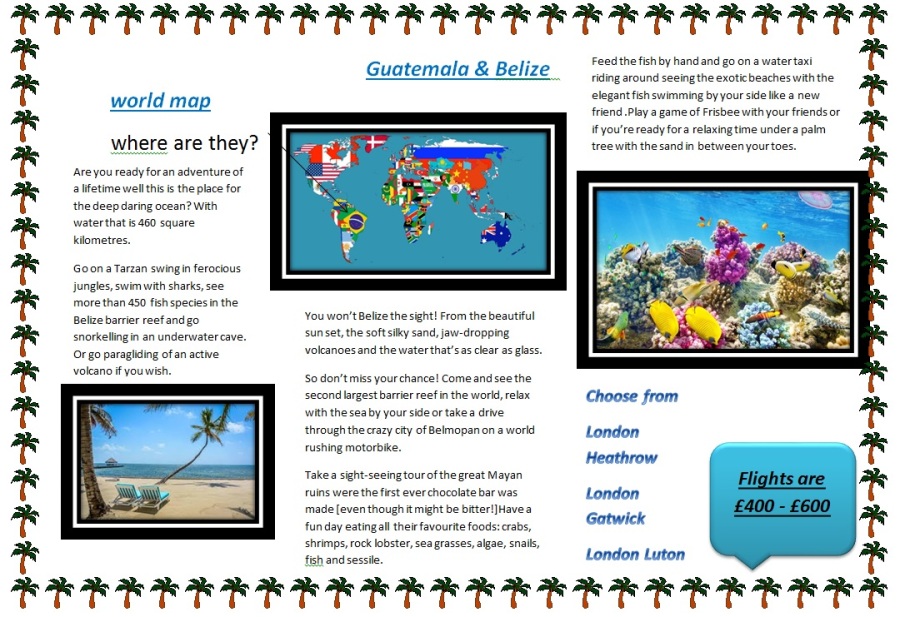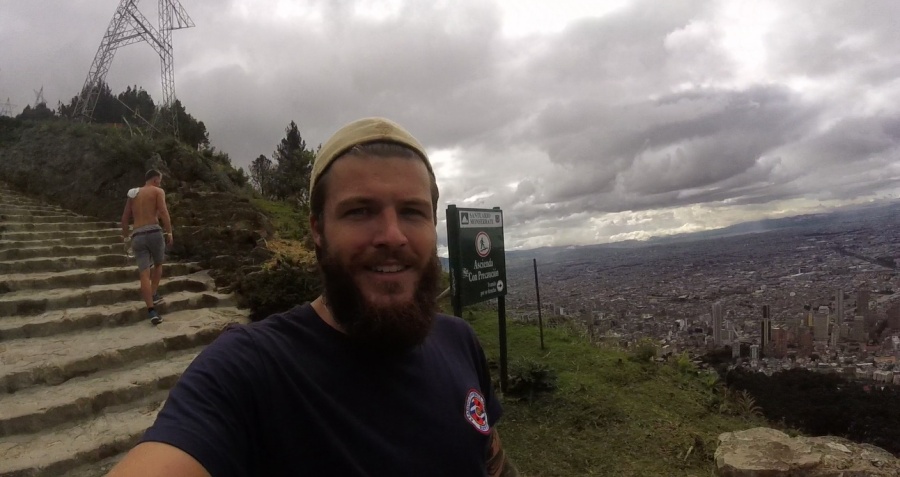I left an internationally-minded Year 5 class to travel the American continents in greater depth (teacher reference!) and promised them I’d make a page so that they could keep up with where I am. Since returning, I’ve been working as a supply teacher around Oxfordshire and Berkshire and regularly publish pupil’s work from my Geography lessons on this page as an incentive. Feel free to leave comments at the bottom of the page!

USA! If you did your USA project file on Washington, Oregon, California, Arizona, Nevada, Texas or Utah, please send in your writing/poems/artwork that we did in Year 5 and I will put them on this website along with photos from my trip. Send them as an email to ben-strickland@live.com
Washington:
Wild horses gallop across the fresh, field air. Huge
Apples are forming, growing into ginormous, juicy fruits.
Sweet cherries dance off branches as wild winds push clouds across
Hazy skies. More than 8,000 lakes trickle
In Washington. The glorious,
Nourishing smell of coffee from the first ever Starbucks.
Glacial ice is frozen on the
Tippy-top of Mount Rainer. State capitol,
Olympia, has towering buildings flashing like torches. The
Never-ending beauty of this state will keep me entertained.
By Swashmi, Y5.
California:
Celebrities collide to call themselves the best, while their fans
Are like wild animals. People visit the
Largest amphitheater in the universe: the Hollywood Bowl. Grizzlies live
In the Rocky Mountains, brown like chocolate and
Fluffy. Snow sometimes stuck in their fur. Succulent
Oranges drip-drop off the golden branches onto the beach. It
Rains, only sometimes, it’s usually scorching like the sun.
Never take a nap and
Ice never grows, it very rarely snows. California is the most
Amazing state, I’ll visit soon, I can’t wait!
By Gracie, Y5
Arizona:
Arizona became the 48th state in the USA on February 14th 1912. Thousands of people come to visit the ‘Grand Canyon State’ every year.
Arizona’s nickname comes from the Grand Canyon, which is an extremely popular attraction and one of the reasons why people visit. As well as the Canyon, there are other attractions:
- Laul observatory discovered Pluto
- Meteor craters
- DM airbase (like a ‘plane graveyard’)
- Sunset creator
- Petrified forest
Native Americans first settled in Arizona 12,000 years ago. The Najavo nationial park encompasses about 25,000miles² (65,000km²) which is about the size of West Virginia.
DM Airbase is a colossal, astonishing ‘plane graveyard’ with thousands of abandoned planes inside. It is located in Tuscan and there are rumours that it was abandoned after WWII.
Whether tourists come to Arizona to hike the Grand Canyon or clamber over broken-down planes, one thing is for certain: their memories of this state will last a lifetime.
By Callum, Y5.
Texas:
The most amazing sound of a musician playing his drums,
Exceptionally loudly on the streets of Austin. The beat goes through me like an
X-Ray in the hot, dry landscape in the
Amazing state of Texas. An old man sits in the
Sunset watching the sun going down like a melting ice cube.
By Sam D, Y5.
Guatemala! I went and explored the Mayan ruins of Tikal, which is part of the Year 6 History curriculum. The ruins are in the north of Guatemala, and were built around 600AD. The Mayan people lived in the ruins until the 9th century, and they were subsequently rediscovered by explorers between the 1500s-1800s. By the late 1800s, archaeologists had started to tell the world about what they had found!
Here are some of my photos from this amazing place. Any artwork or writing that you have done with your teachers, I would love to see. Please email them to me and I’ll publish them here!
After watching my GoPro video from Guatemala and Belize, my Year 5/6 class tried to convince their other teacher to visit over the summer holidays.

By Ted, Ben S and Ben G, Y6.

By Lily and Charli, Y5
Colombia! Thanks to Beth and Aaron for my Reading FC shirt, I wore it when I climbed up Cerro de Monserrate in Bogota, Colombia.

Ecuador! I went to the equator in Quito, the country’s capital, and was intrigued by the effects that being on the imaginary line around the middle of the world had on everyday situations. Watch the video below (answers are below!):
Bonus question: Why did I weigh 1kg less whilst on the equator?
#1: The two poles (North and South pole) exert a force on the world called ‘coriolis’. They are strongest at the poles, and non-existent in the middle (the equator). When in the Southern hemisphere, the water goes clockwise; when in the North, anti-clockwise. If you have a sink on the equator, water will go down the plughole without any spinning at all. (Spin a globe on it’s axis with one person looking at Australia and another looking at Russia. One person will see their country move anti-clockwise, the other will see a clockwise rotation. But the globe is only spinning one way? It’s the same principle!)
#2: The important thing here is that the egg is raw and the yolk is still in a liquid state. In the same way as Experiment #1, the ‘coriolis’ force has an effect on water; but on the equator it is non-existent. This allows the liquid yolk to be pulled directly to the bottom of the egg, and give you the best chance of balancing it on such a small surface!
#3: It’s not just water that is affected by the ‘coriolis’ force. When I was blindfolded and walking down the equator line, I had my arms stretched out. One reached towards the North Pole, the other towards the South. Both poles were trying to pull me towards them, pulling me off balance and making the task of walking in a straight line impossible. It would have been simple if I hadn’t put my arms out towards each pole.
Bonus: The equator is the furthest point away from the Earth’s centre, which means gravity has ever-so-slightly less of an effect. In the same way, astronauts weigh less in space, because they are further away.
Galapagos Islands! Sadly I didn’t have the time or money to make it from mainland Ecuador to the islands where Darwin first formed his theory of evolution, but that didn’t stop us looking at Darwinism and using a little poetic licence when explaining how marine iguanas first got to the islands and subsequently evolved. Tom (from Year 3)’s story just makes me want to go and see them for myself!
A long, long time ago in Peru there was some iguanas on a hot day eating bugs. It was so hot that all of the baby iguanas went to get a drink on some floating debris while the adults were getting food ready for tea.
While the babies were having a drink the waves got crazy and the debris made a raft with the iguanas on it. It floated away into the sea. Pedro said “We are going to sea!”
Flor said “Look land! We are going home”. Maria said “It is the Galapagos!”
The island was packed with sea lions as big as boulders. The sea lions taught the six iguanas how to eat fish and algae, how to swim and keep their eyes open underwater. Victor said “We must be the most popular iguanas in the world.”
After a year of practice the iguanas became marine iguanas. The first and only ones in the world.
By Tom B, Y3
Uruguay! After showing Year 3, 4 and 5 some of my photos from my time at Karumbe (the turtle sanctuary that I volunteered at – click to read more), some of the class wrote stories to persuade the readers that marine life and humans need each other in order to both be happy. Fin (Year 3)’s story was particularly touching with it’s links to inclusion. I’m not sure if the turtles that I re-released back into the wild will still remember me though!
Once there lived a turtle who had a baby and the eggs were rock solid. A couple of weeks after they were laid, there was a crack in the eggs. The babies hatched but one of them was different to the others. (It is considered wrong to be different if you are a turtle in South America!)
Sadly the other turtles left the nest without the odd one out. Maybe they thought it was from a different family or a different species. Soon after, the mum left too. Very luckily, a Uruguayan boy saved the odd one out. “This is a beautiful turtle!” he said, “Look at all the different colours! Wow!” The boy was amazed and took it home.
After weeks of playing with it, he called it a name. He called his turtle John. He thought it was the prettiest turtle in the world, with colours of brown, green, red, yellow and blue.
Sadly, John the turtle would have to leave in 5 months because he was a teenager in turtle years, and teenager turtles had to go to North America. They continued to play for the whole of the 5 months until the time came for John to leave and hopefully find his parents in North America.
The boy took John to the shore and said, “Be free! Go and find your parents! Quick! Goodbye!” and the turtle swam off in the shallows. On every paddle on his way to find his parents, he thought of his best friend, the Uruguayan boy from the beach.
By Fin H, Y3





